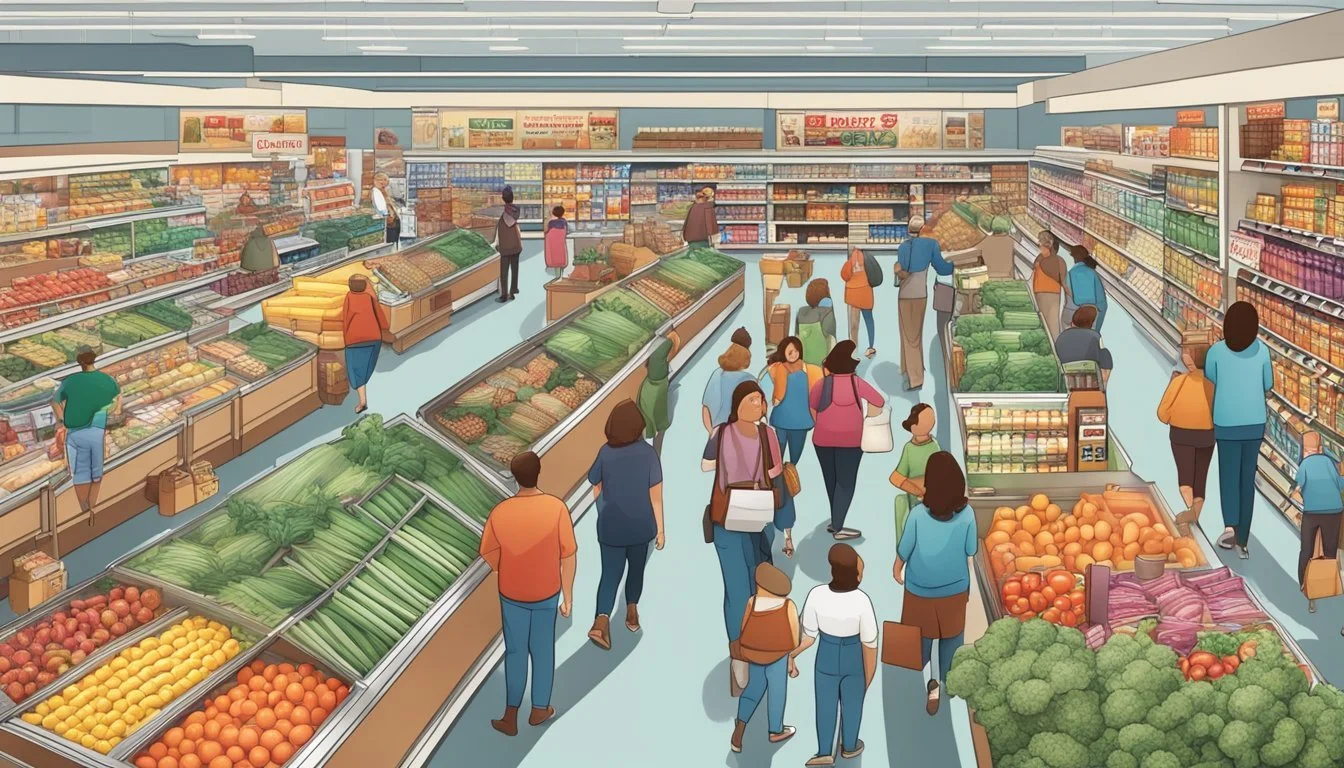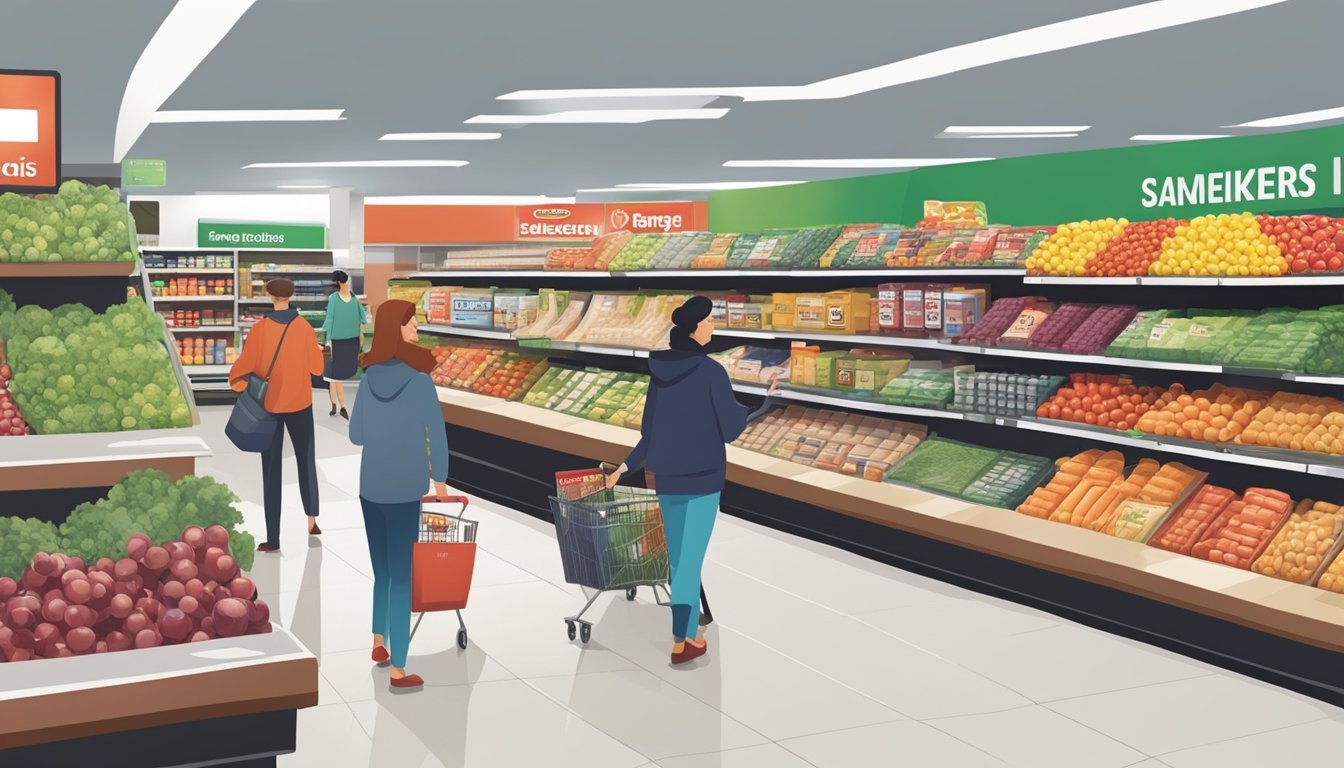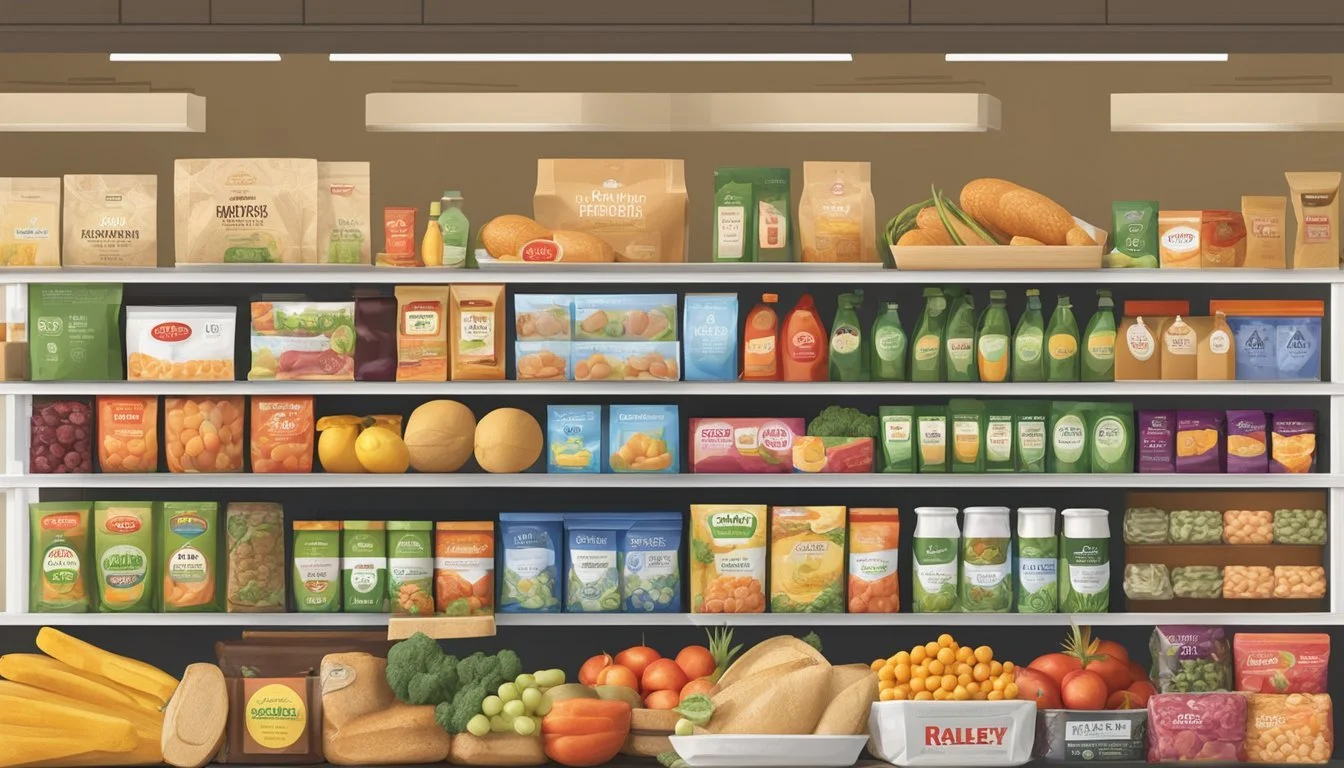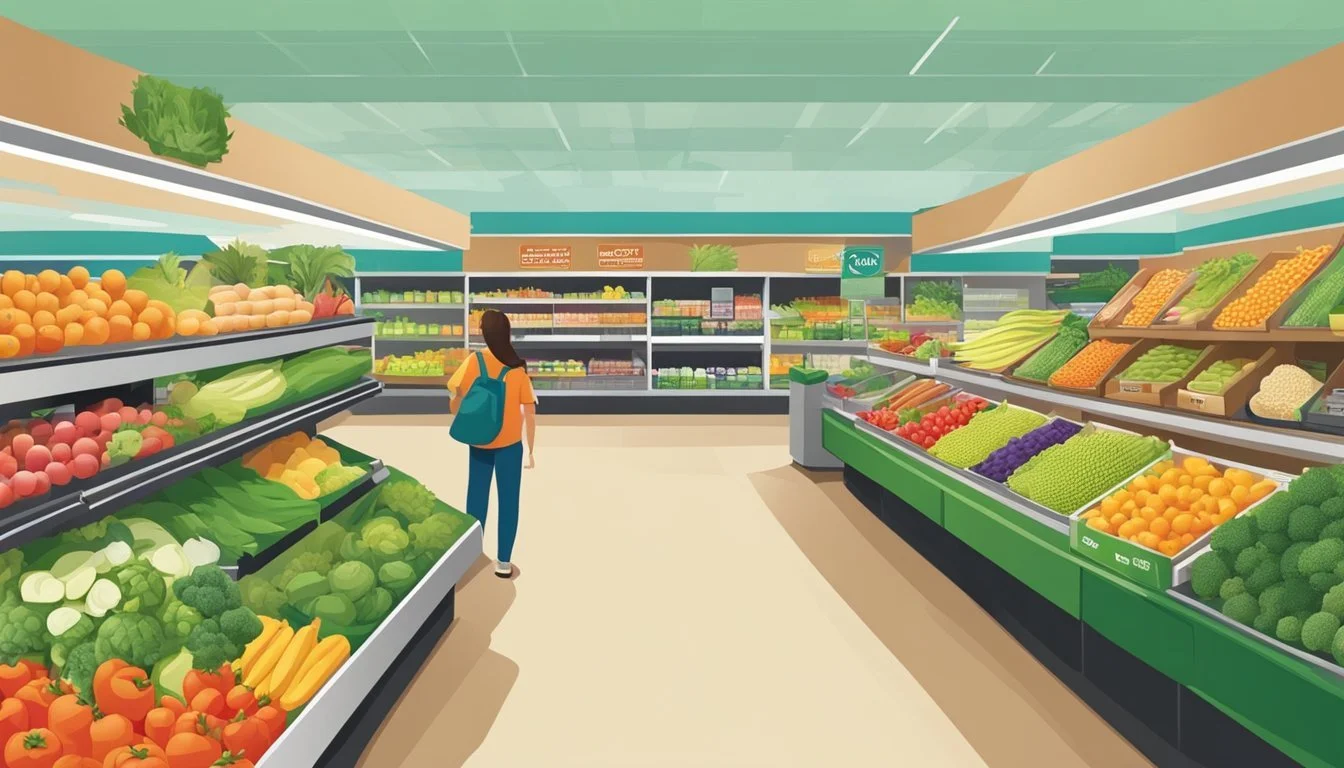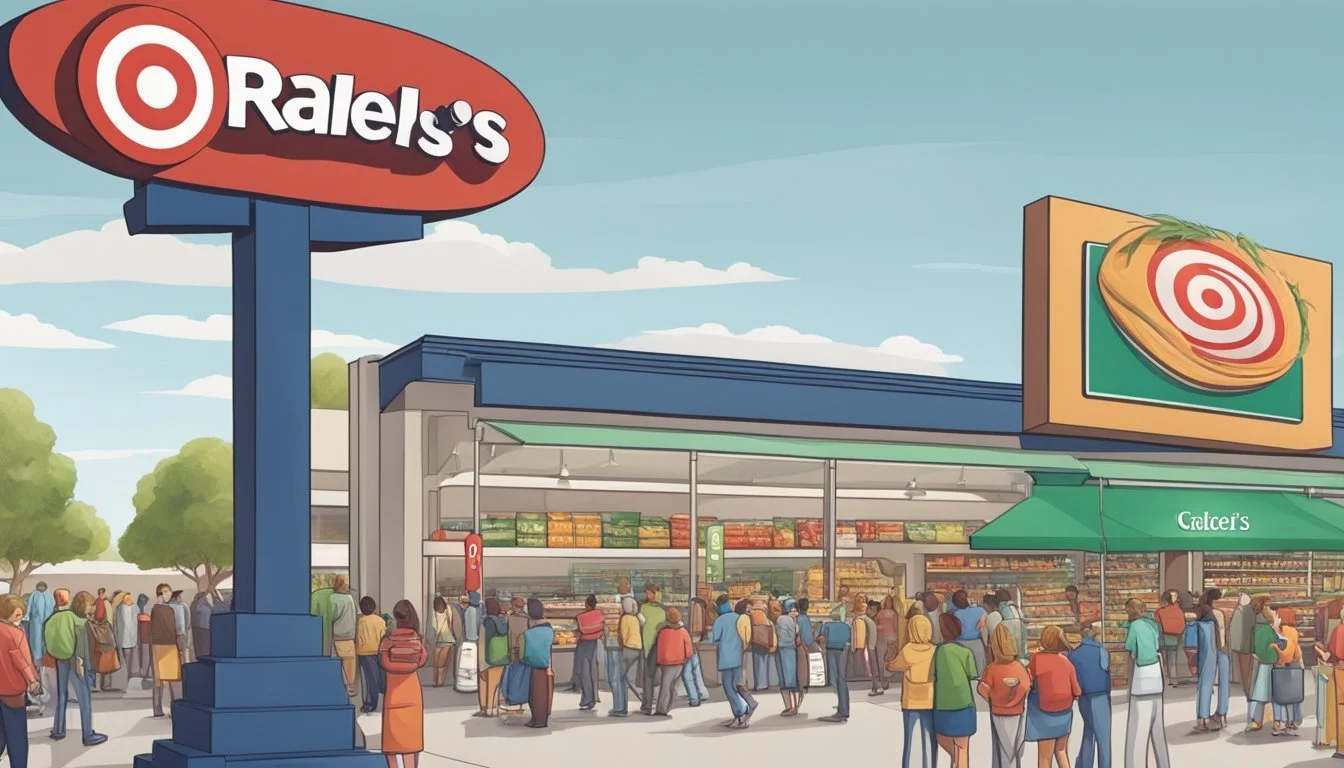Target vs Raley's
A Comprehensive Comparison of Price, Quality, and Selection
Target and Raley's represent two distinct options in the grocery store landscape. Target offers a wide range of products beyond groceries, while Raley's focuses primarily on food and household essentials. Both stores have their strengths and appeal to different shopper preferences.
When it comes to pricing, Target typically falls between discount chains like Walmart and traditional supermarkets. Target's grocery prices are generally more competitive than Raley's, which tends to position itself as a higher-end option with prices closer to premium stores. This pricing difference can significantly impact a family's grocery budget over time.
Quality and selection are important factors to consider alongside price. Raley's has built a reputation for offering high-quality produce and meats, often sourcing from local suppliers. Target, on the other hand, provides a mix of national brands and its own in-house labels, catering to shoppers seeking both value and variety in their grocery purchases.
Company Backgrounds
Target Corporation, founded in 1902, is a major American retail corporation. It operates a nationwide chain of discount department stores, including grocery sections in many locations. Target has grown to become the eighth-largest retailer in the United States.
Raley's, established in 1935, is a privately held, family-owned supermarket chain. It primarily serves Northern California and Nevada. Raley's has expanded over the years to include several other grocery store brands under its umbrella.
Target's grocery offerings are part of its broader retail strategy. The company began incorporating fresh food into its stores in the early 2000s. Today, many Target locations feature full grocery departments.
Raley's focuses exclusively on the grocery sector. The company has built a reputation for emphasizing fresh, high-quality produce and prepared foods. It operates under various banners, including Raley's, Bel Air Markets, and Nob Hill Foods.
Both companies have embraced technology and e-commerce. Target offers grocery delivery and pickup services through its app and website. Raley's has also developed online shopping options for its customers.
Target and Raley's represent different approaches to grocery retail. Target integrates groceries into its general merchandise stores, while Raley's specializes in standalone supermarkets.
Product Range and Quality
Target and Raley's offer distinct product selections, catering to different consumer needs. Each store has unique strengths in various departments, from fresh produce to prepared foods.
Fresh Produce Comparison
Target's produce section features a mix of conventional and organic options. The selection is generally adequate for basic needs, with pre-packaged salads and cut fruits available.
Raley's emphasizes locally sourced, seasonal produce. Their stores typically offer a wider variety of fruits and vegetables, including specialty items. Raley's produce often receives praise for freshness and quality.
Both stores stock organic produce, but Raley's usually has a more extensive organic selection.
Meat and Seafood Options
Target's meat department provides standard cuts of beef, pork, and chicken. They offer some organic and antibiotic-free options. The seafood selection is limited, with mostly frozen items available.
Raley's excels in this category. They feature a full-service meat counter with trained butchers. Raley's offers a range of grass-fed beef, free-range poultry, and sustainably sourced seafood. Their selection includes specialty cuts and marinated meats.
Raley's also provides more information about the origin and quality of their meats and seafood.
Bakery and Prepared Foods
Target's bakery section primarily consists of packaged breads and sweets. They offer a small selection of fresh-baked goods and prepared foods, focusing on convenience items like rotisserie chickens and pre-made sandwiches.
Raley's boasts a more extensive in-store bakery, producing a variety of fresh breads, pastries, and custom cakes. Their prepared foods section is larger, featuring hot and cold options made in-store. Raley's often includes a deli counter and salad bar.
Both stores offer grab-and-go meals, but Raley's typically provides more variety and fresher options.
Non-GMO and Organic Selection
Target has increased its organic and non-GMO offerings in recent years. Their Good & Gather brand includes many organic options across various product categories.
Raley's has a stronger focus on natural and organic products. They offer a wide range of organic, non-GMO, and health-focused items throughout the store. Raley's often features dedicated sections for these products.
Both stores label non-GMO and organic items clearly, but Raley's typically provides more detailed information about product sourcing and health benefits.
Price and Value
Target and Raley's offer different approaches to pricing and value. Target emphasizes competitive everyday prices and frequent promotions, while Raley's focuses on quality products with targeted savings opportunities.
Regular Prices and Deals
Target provides consistently low prices on many grocery items, especially their store brands. Their weekly ad features numerous deals and discounts. Target's Circle rewards program offers additional savings through digital coupons and personalized offers.
Raley's pricing tends to be slightly higher on average. They offer a weekly ad with sales and specials. Raley's Something Extra rewards program provides personalized deals and gas savings. Both stores run loss leader promotions on popular items to attract customers.
Membership and Bulk Shopping
Target does not offer a paid membership program. Customers can save by buying larger sizes of certain products, but true bulk purchasing is limited.
Raley's also lacks a membership model. Their stores offer some bulk and family-size options, but not to the extent of warehouse clubs. For significant bulk savings, shoppers may need to look elsewhere.
Comparison with Competitors
Target's grocery prices are generally lower than Raley's but higher than discount chains like Walmart and Aldi. Target often beats traditional supermarkets on price for packaged goods and household items.
Raley's prices are typically higher than large national chains. They position themselves as a premium option, emphasizing quality and service over rock-bottom prices. Raley's struggles to compete on price with warehouse clubs like Costco for bulk purchases.
Both stores face tough competition from budget options like Grocery Outlet and Trader Joe's, which offer unique mixes of low prices and quality products.
Shopping Experience
Target and Raley's offer distinct shopping experiences tailored to different customer needs. Their approaches to store layout, checkout processes, and customer service shape how shoppers interact with each retailer.
Store Layout and Cleanliness
Target stores typically feature wide aisles and an open floor plan. The layout encourages browsing, with clothing and home goods prominently displayed near the entrance. Grocery sections are often located towards the back. Target maintains a clean, bright atmosphere with consistent signage.
Raley's focuses on a more traditional grocery store layout. Fresh produce, meat, and bakery departments are usually positioned around the store's perimeter. Aisles are organized by food categories. Raley's stores generally have a warm, inviting ambiance with an emphasis on cleanliness and product presentation.
Both retailers prioritize store cleanliness, but Raley's may have an edge in the fresh food departments due to its grocery-centric focus.
Checkout and Customer Congestion
Target implements various checkout options to manage customer flow. Self-checkout kiosks are common, supplementing staffed registers. During peak hours, Target often opens additional lanes to reduce wait times.
Raley's typically relies more on traditional checkout lanes with cashiers. Some locations offer self-checkout, but it's less prevalent than at Target. Raley's stores may experience more congestion during busy periods due to fewer total lanes.
Target's mix of checkout options generally results in shorter wait times, especially for customers with fewer items.
Customer Service
Target employs a large staff spread across various departments. Employees are trained to assist with product locations and general inquiries. Specialized help in electronics or clothing sections is usually available.
Raley's emphasizes personalized service, particularly in specialized departments like the deli, bakery, and meat counter. Staff members often have in-depth product knowledge and can offer cooking suggestions or meal ideas.
Raley's typically provides a more personalized customer service experience, especially for food-related queries. Target offers efficient, courteous service but may feel less specialized in comparison.
Healthy and Specialty Options
Target and Raley's both offer health-conscious and specialty products to cater to diverse dietary needs and preferences. Their selections of organic, local, and artisanal items vary in range and quality.
Dietary Specific Products
Target provides a wide array of gluten-free, non-GMO, and organic options. Their Good & Gather brand includes many health-focused items at competitive prices. Raley's excels in this area with their extensive "Something Extra" program.
Raley's offers a broader selection of specialty dietary products, including vegan, keto, and paleo-friendly options. Their shelves are stocked with numerous gluten-free alternatives and organic produce.
Target's selection, while growing, is more limited in comparison. However, they often feature popular health food brands at lower prices than specialty stores.
Local and Artisan Foods
Raley's takes pride in sourcing products from local farmers and artisans. Their stores showcase a variety of regional cheeses, baked goods, and seasonal produce from nearby farms.
The "Raley's Local" program highlights items produced within 50 miles of each store. This initiative supports local economies and ensures fresher products for customers.
Target's approach to local and artisan foods is less robust. While they occasionally feature regional products, their focus is more on national brands and their own private labels.
Raley's offers a more diverse selection of specialty items like craft chocolates, small-batch sauces, and locally roasted coffee. Target's artisanal options are typically limited to a few popular brands in each category.
Sustainability and Ethical Practices
Target and Raley's have implemented various sustainability initiatives and animal welfare policies. Both companies aim to reduce their environmental impact and improve ethical practices in their supply chains.
Environmental Initiatives
Target has set ambitious goals for sustainability. The company plans to reduce its carbon footprint by 30% by 2030. Target is also working to make 100% of its owned brand products recyclable, reusable, or compostable by 2025.
In stores, Target has implemented energy-efficient lighting and HVAC systems. The company has installed solar panels on over 500 locations. Target offers in-store recycling for plastic bags, electronics, and other materials.
Raley's focuses on reducing food waste. The company donates unsold food to local food banks and composts inedible produce. Raley's has also eliminated single-use plastic bags in its stores.
Animal Welfare Commitment
Target has committed to sourcing 100% cage-free eggs for its owned brands by 2025. The company also aims to improve animal welfare standards for chicken, pork, and beef suppliers.
Raley's offers a range of animal welfare certified products. These include cage-free eggs, grass-fed beef, and humanely raised pork. The company works with suppliers to ensure proper animal handling and living conditions.
Both retailers have expanded their plant-based product offerings. This provides more options for customers concerned about animal welfare.
Brand Perception and Consumer Loyalty
Target and Raley's have distinct brand identities that shape consumer perceptions and loyalty. Each retailer employs different strategies to attract and retain customers in the competitive grocery market.
Market Position and Brand Image
Target positions itself as a trendy, affordable one-stop shop for groceries and other household items. Its "Expect More. Pay Less." slogan resonates with budget-conscious consumers seeking style and value. Target's bright, clean stores and exclusive designer collaborations enhance its upscale discount image.
Raley's, a regional chain, focuses on quality, freshness, and community engagement. Its smaller footprint allows for a more personalized shopping experience. Raley's emphasizes locally sourced products and health-conscious options, appealing to shoppers prioritizing nutrition and sustainability.
Customer Reviews and Ratings
Target consistently receives positive reviews for its wide product selection and competitive pricing. Customers appreciate the convenience of purchasing groceries alongside other household items. Target's user-friendly app and efficient pickup services earn high marks in customer satisfaction surveys.
Raley's garners praise for its friendly staff and high-quality produce. Shoppers commend the chain's commitment to organic and natural products. Raley's loyalty program, which offers personalized deals based on shopping habits, is well-received by customers.
Consumer Behavior and Preferences
Target attracts younger, urban shoppers who value convenience and style. Its "Target Run" concept has become a cultural phenomenon, encouraging impulse purchases beyond the grocery list. Target's private label brands, like Good & Gather, have gained a loyal following for their quality and affordability.
Raley's appeals to health-conscious consumers and families seeking a more traditional grocery experience. Its emphasis on fresh, local produce and specialty items resonates with shoppers willing to pay a premium for quality. Raley's customers tend to be more brand-loyal, appreciating the personalized service and community focus.
Conclusion
Target and Raley's each offer unique strengths to shoppers. Target excels in providing a wide variety of non-grocery items alongside its food offerings. This makes it ideal for one-stop shopping trips.
Raley's, on the other hand, focuses more on high-quality groceries and local produce. Their commitment to nutrition education and shelf guides helps customers make informed choices.
Value-conscious shoppers may find Target's prices more appealing, especially with their frequent sales and Target Circle program. Raley's tends to have higher prices but compensates with superior quality in many categories.
Service experiences can vary by location for both chains. However, Raley's often receives praise for its personalized customer service and knowledgeable staff.
The shopping experience differs significantly between the two. Target offers a modern, streamlined feel with its store layouts. Raley's provides a more traditional grocery store atmosphere with an emphasis on fresh departments.
Ultimately, the choice between Target and Raley's depends on individual priorities. Those seeking convenience and affordability may prefer Target. Shoppers focused on premium groceries and a traditional supermarket experience may lean towards Raley's.

